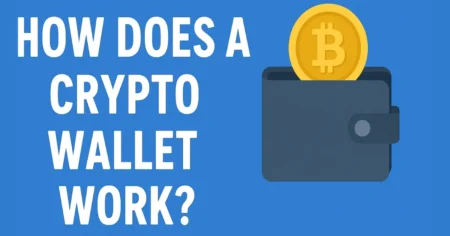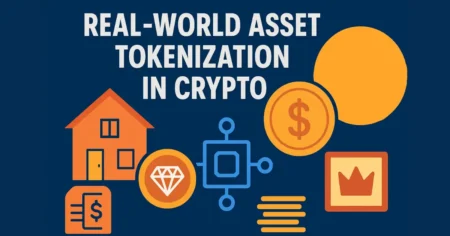Introduction to Crypto Portfolio Management
What is Crypto Portfolio Management?
Crypto portfolio management is the art and science of organizing, monitoring, and optimizing your investments in various cryptocurrencies. It’s not just about buying Bitcoin and hoping it skyrockets. Instead, it’s about having a strategic game plan. Think of it like managing your traditional investment portfolio, only in a space where volatility rules and innovation never sleeps.
A crypto portfolio includes all the digital assets you own—Bitcoin, Ethereum, altcoins, tokens, stablecoins, NFTs, and even DeFi products. Managing these assets means you regularly assess their performance, shift your allocations based on market changes, and aim to maximize returns while minimizing risk. This becomes especially important when you’re investing serious capital.
Just like you wouldn’t blindly toss money into the stock market, you shouldn’t dive into crypto without a plan. And that’s where portfolio management becomes crucial—it helps reduce emotional decisions, avoid panic selling, and build a long-term roadmap.
Moreover, portfolio management isn’t just for big-time investors. Even if you’re putting $100 into crypto, managing it smartly can mean the difference between profit and loss. Whether you’re a beginner or a seasoned trader, a structured portfolio management approach keeps your crypto journey on track.
Why Portfolio Management is Crucial in Crypto?
Crypto is famously volatile. One day you’re up 50%, and the next, your assets have taken a nosedive. This wild nature of digital assets makes managing your portfolio not just helpful—it’s absolutely essential.
First off, portfolio management provides structure. When the market turns red, you won’t be scrambling in fear if you’ve already planned for such scenarios. You’ll know which assets to hold, which ones to sell, and how to rebalance.
Second, it keeps emotions in check. Crypto investors often fall prey to FOMO (Fear Of Missing Out) or FUD (Fear, Uncertainty, Doubt). With a solid plan in place, you’re less likely to be swayed by hype or panic.
Third, managing a portfolio helps track performance. You can’t improve what you don’t measure. Having a record of your trades, holdings, and profits allows you to fine-tune your strategy over time.
Lastly, it encourages better risk management. You can allocate your funds based on risk levels and avoid going all-in on the next meme coin that’s trending on Twitter. Because let’s be honest—chasing hype without a strategy is a quick path to losses.
If you’re serious about building wealth through crypto, then portfolio management isn’t optional—it’s your compass.
Understanding the Basics of a Crypto Portfolio
Types of Assets You Can Include
A well-rounded crypto portfolio isn’t just about Bitcoin and Ethereum. Sure, they’re the giants, but the crypto world is vast and diverse. Let’s break down the types of assets you can consider:
- Major Coins – These include Bitcoin (BTC), Ethereum (ETH), and other top-tier cryptocurrencies. They form the foundation of most portfolios because they’re more stable and have strong market dominance.
- Altcoins – These are all other coins besides BTC. Altcoins like Solana (SOL), Cardano (ADA), and Polkadot (DOT) offer great upside potential, though they’re more volatile.
- Stablecoins – Think USDT, USDC, and DAI. These are pegged to the value of fiat currencies like the US Dollar. They help hedge your portfolio during downturns.
- DeFi Tokens – These are coins related to decentralized finance protocols such as Aave (AAVE), Uniswap (UNI), and Compound (COMP). They offer passive income through staking or yield farming.
- NFTs and Gaming Tokens – While riskier, tokens from gaming projects (like Axie Infinity or Sandbox) or unique digital assets (NFTs) can diversify your portfolio into new areas of growth.
- Utility Tokens – These are used within specific platforms or ecosystems. For example, BNB (Binance Coin) can reduce trading fees on Binance.
- Governance Tokens – Holders of these tokens can vote on changes in DeFi projects or DAOs. These often come with both risk and influence.
When selecting assets, think in terms of purpose, not just hype. Ask yourself: what role does this coin play in my portfolio? Growth? Stability? Passive income? The answer will guide your strategy.
Risk and Reward: The Crypto Volatility Factor
Volatility is both a blessing and a curse in crypto. Yes, it gives you the chance to make big gains—but it also comes with the risk of significant losses.
Understanding this is key to portfolio management. Unlike traditional assets, crypto can swing 10-30% in a single day. That means if your portfolio is overly exposed to high-volatility assets, you’re essentially gambling.
A smart investor evaluates risk like a poker player reads a table. Here’s how to think about it:
- High-risk, high-reward assets like meme coins or new projects may explode in value—but they’re also the most likely to crash.
- Mid-risk assets like top altcoins are more stable, yet still provide upside.
- Low-risk assets like Bitcoin and stablecoins anchor your portfolio, offering consistency in a sea of chaos.
Risk management isn’t about avoiding danger completely—it’s about preparing for it. Spread your investments across various risk levels. And don’t forget to use tools like stop-loss orders or hedging strategies if you’re actively trading.
Most importantly, never invest more than you can afford to lose. That one golden rule applies to every crypto investor, from newbie to whale.
Creating a Solid Crypto Portfolio Strategy
Setting Investment Goals and Risk Tolerance
Before you throw money into the crypto space, ask yourself this: What am I hoping to achieve?
Are you investing for short-term profits, long-term wealth, passive income, or a mix of all three? Your investment goals will shape your entire strategy. If you’re a young investor looking to take some calculated risks, your portfolio will look very different from someone nearing retirement aiming for stability.
Once your goals are clear, it’s time to determine your risk tolerance. This is essentially how much loss you’re emotionally and financially prepared to handle. Crypto isn’t like traditional investing. Here, a 50% drop in value might happen in a week. Can you stomach that kind of volatility?
Let’s break it down with some questions:
- Are you okay seeing your portfolio lose 30% in a day and not panic sell?
- Can you hold through a bear market that lasts a year?
- Will you be constantly checking prices, or can you stay hands-off?
Your answers will guide how aggressively or conservatively you invest. Conservative investors may lean heavily on Bitcoin, Ethereum, and stablecoins. Aggressive investors might venture into small-cap altcoins and DeFi tokens.
Here’s a simple risk-based allocation example:
- Low Risk (40%): BTC, ETH, USDT
- Medium Risk (35%): ADA, SOL, MATIC
- High Risk (25%): SHIB, PEPE, new altcoins, DeFi tokens
This kind of framework helps you stick to your plan and avoid emotional decisions when the market gets turbulent.
Remember, your goals and tolerance aren’t static. Re-evaluate them periodically as your financial situation, knowledge, and market conditions evolve.
Diversification: Don’t Put All Your Eggs in One Basket
Diversification isn’t just a buzzword—it’s a lifeline in the crypto world.
Crypto is an unpredictable market. Even the biggest coins can crash unexpectedly. So, relying on just one or two tokens is asking for trouble. Diversification spreads out your risk and increases the chances that at least part of your portfolio will perform well, even if others don’t.
Think of it like this: If one coin tanks, others might be surging. That balance helps you stay afloat.
Here are a few smart ways to diversify:
Across Market Caps
- Large-cap coins like BTC and ETH are safer bets.
- Mid-cap coins (AVAX, LINK) offer potential growth.
- Small-cap coins can be explosive but are high risk.
Across Sectors
- DeFi (AAVE, UNI)
- Layer 1s (SOL, ETH)
- Layer 2s (MATIC, ARB)
- Gaming & NFTs (AXS, SAND)
Geographically Diversified Projects
Diversify by including projects based in different regions (Asia, U.S., Europe) to spread regulatory and market exposure.
Yield vs. Growth Tokens
Some assets offer staking or interest. Others are built for value appreciation. Have a mix of both.
However, don’t overdo it. Owning 100 coins makes it harder to track performance. A diversified yet manageable portfolio of 10–20 assets is often ideal for most investors.
Remember, every new asset should serve a specific purpose. Don’t buy a coin just because it’s trending on Reddit. Make informed decisions based on your strategy and goals.
Tools and Apps for Crypto Portfolio Management
Top Portfolio Trackers Worth Trying
Gone are the days of managing your crypto with a pen and notebook. In today’s fast-paced crypto environment, portfolio management tools are a must. They help you monitor your holdings, track real-time prices, analyze your profits, and plan your next move.
Here are some of the most trusted portfolio trackers in the market:
CoinStats
- Supports over 8,000 cryptocurrencies
- Syncs with exchanges and wallets
- Offers analytics, charts, and a mobile app
Delta
- Clean interface with powerful insights
- Supports stocks and crypto (great for hybrid investors)
- Tracks portfolio value, news, and market alerts
Zerion
- Especially good for DeFi users
- Connects with MetaMask and other wallets
- Enables direct DeFi investing through the platform
Kubera
- A premium tool focused on privacy and personal finance
- Integrates crypto with traditional assets (real estate, stocks)
- Great for high-net-worth individuals
CoinTracking
- Excellent for tax reporting
- Offers advanced analytics and trade importing
- Ideal for active traders and long-term holders
Blockfolio (Now FTX App)
- Once the most used tracker; now integrated into the FTX ecosystem
- Not as recommended after FTX’s collapse, but some still use it
While choosing a tool, make sure it aligns with your needs. If you’re heavily into DeFi, Zerion might be your best bet. If you’re doing taxes, CoinTracking makes it seamless. And if you want something simple and mobile-friendly, Delta or CoinStats are solid options.
Must-Have Features in a Good Portfolio Tool
Not all portfolio apps are created equal. Some are loaded with features but buggy. Others are sleek but lack depth. When evaluating a tool, look for these essential features:
- Exchange & Wallet Syncing: The app should automatically fetch your transactions via API.
- Real-Time Price Updates: Especially important in crypto, where prices change by the second.
- Multi-Asset Support: Should support a wide range of tokens and NFTs.
- Tax Tools: Automatic gain/loss calculations and export options for tax filing.
- Performance Charts: To see how your investments are doing over time.
- Security: End-to-end encryption, secure login options, and no custody of your funds.
- Mobile + Desktop Compatibility: You should be able to manage your portfolio anywhere.
Bonus features like market alerts, news integrations, and staking dashboards are nice to have but not mandatory.
Before committing, try out a few free versions or demos. User experience matters, especially if you’re going to be checking the app daily.
Allocating Assets Effectively
How to Allocate Based on Risk Profile
Asset allocation is the foundation of any portfolio strategy. It decides how much of your money goes into different types of assets based on your risk profile.
Here’s a simplified breakdown for different types of investors:
Conservative Investor
- 60% Bitcoin and Ethereum
- 25% Stablecoins (for staking or earning yield)
- 10% Mid-cap altcoins
- 5% High-risk tokens or NFTs
- Goal: Preserve capital and earn passive income
Balanced Investor
- 40% BTC/ETH
- 20% Stablecoins
- 30% Mid-cap and DeFi tokens
- 10% High-risk projects
- Goal: Steady growth with moderate risk
Aggressive Investor
- 25% BTC/ETH
- 10% Stablecoins
- 40% Mid-cap and DeFi tokens
- 25% High-risk assets and meme coins
- Goal: Maximize gains, accepting higher risk
Customize your percentages based on your comfort zone, market conditions, and financial goals. And don’t forget to include cash reserves—you’ll want funds ready if the market dips and buying opportunities arise.
Rebalancing Your Portfolio: When and How?
Rebalancing is the process of adjusting your portfolio to maintain your desired asset allocation. Over time, some coins may grow faster than others, leading to an unbalanced portfolio that no longer matches your risk tolerance or investment goals.
Let’s say you started with 50% in Bitcoin and it outperforms the rest of your holdings. Now it makes up 70% of your portfolio. That could expose you to more risk than you intended. Rebalancing helps you take profits from over-performing assets and reinvest in underweight ones to restore balance.
There are two main approaches to rebalancing:
Time-Based Rebalancing
- You rebalance your portfolio at regular intervals—weekly, monthly, or quarterly.
- It’s systematic and removes emotion from the process.
- Great for long-term investors who don’t want to micromanage.
Threshold-Based Rebalancing
- You only rebalance when allocations drift beyond set thresholds (10%).
- More flexible and efficient, especially in volatile markets.
- Helps reduce unnecessary trading fees.
Rebalancing isn’t just about numbers—it’s psychological too. Selling a “winning” coin can feel wrong, but it locks in gains and prevents overexposure. Likewise, adding to a lagging asset can feel risky, but if it’s fundamentally sound, you’re essentially buying low.
Pro Tip: Combine both strategies. Set a time-based review (monthly), and within that, use thresholds to decide if action is needed.
Tools like CoinStats, Kubera, or Delta often have built-in portfolio allocation visualizers to help you decide when to rebalance. If you’re actively using DeFi platforms, manual tracking may be needed, especially when yield rates shift.
The key is discipline. Stick to your allocation strategy, and don’t let fear or greed dictate your next move.
Best Practices for Managing Your Crypto Portfolio
Regular Monitoring and Analysis
Crypto markets don’t sleep. They’re open 24/7, which means your investments are always moving. That’s why regular monitoring is critical if you want to stay ahead and protect your capital.
Now, don’t mistake regular monitoring for obsessing over every price tick. That leads to stress and knee-jerk reactions. Instead, create a healthy routine for checking in on your portfolio.
Here’s a solid monitoring routine:
- Daily: Check your portfolio tracker briefly to spot major swings or news events.
- Weekly: Review your performance, check for project updates, and note any price patterns.
- Monthly: Assess your allocations, rebalance if needed, and reevaluate your asset choices.
Also, analyze your past decisions. Where did you make the most profit? Which tokens performed poorly? This helps refine your strategy and learn from mistakes.
Here’s what to keep an eye on:
- Coin Fundamentals: Is the project still active? Are developers building and delivering?
- Market Sentiment: Are we in a bull or bear phase? Is the hype fading?
- Technical Indicators: Basic TA (technical analysis) can help spot entry/exit points.
- News & Regulations: Sudden bans, exchange hacks, or lawsuits can affect prices overnight.
Many investors use platforms like Glassnode or Santiment for on-chain metrics to go deeper. You don’t have to be a pro analyst, but staying informed separates the smart investors from the lucky ones.
Avoiding Emotional Trading and Hype
Crypto investing is as much psychological as it is technical. Markets are driven by emotions—fear, greed, excitement. And if you’re not careful, those emotions will guide your decisions in all the wrong ways.
Here’s how to avoid falling into emotional traps:
Don’t Chase Pumps
- If a coin’s up 300% in a week, it’s probably too late. Jumping in out of FOMO often leads to losses when the hype dies.
Ignore the Noise
- Twitter, Reddit, YouTube—they’re filled with self-proclaimed experts. Take advice with a grain of salt. Do your own research (DYOR).
Stick to Your Plan
- Have entry and exit strategies for every investment. Don’t move the goalposts because “it might go higher.”
Use Stop-Losses and Take-Profits
- Automate your decisions to prevent panic selling or over-optimistic holding.
Don’t Obsess Over Price
Constant price checking leads to stress and impulsive moves. Set alerts instead of refreshing charts all day.
Think long-term. The most successful crypto investors are the ones who think in years, not days. If you believe in the fundamentals of a project, short-term volatility shouldn’t scare you out of it.
Lastly, keep emotions in check by never investing more than you can afford to lose. When your rent or food budget is at stake, every dip feels like a disaster. Stay financially responsible, and your head will stay clear.
Security Measures for Crypto Investors
Storing Your Crypto Safely
Security is everything in crypto. Unlike banks, there’s no customer service number to call when you lose your funds. Once your crypto is gone, it’s gone. That’s why proper storage is non-negotiable.
Let’s go over the safest options:
Hardware Wallets (Cold Storage)
- Devices like Ledger or Trezor store your keys offline.
- Immune to hacks, viruses, and online threats.
- Ideal for long-term holders (HODLers).
- Requires you to physically confirm every transaction.
Software Wallets (Hot Wallets)
- Mobile or desktop wallets like Trust Wallet or Exodus.
- More convenient, but also more vulnerable.
- Use for active trading or small amounts.
Exchange Wallets
- Provided by platforms like Binance, Coinbase, Kraken.
- Easy to use, but you don’t own the private keys.
- Exchanges can get hacked or shut down. Only use for short-term holding or trading.
Multi-Sig Wallets
- Require multiple private keys to authorize a transaction.
- Great for businesses or shared investments.
- Enhanced security for large holdings.
Paper Wallets
- Literally a printout of your private keys or QR codes.
- Extremely secure but easy to lose or damage.
- Not beginner-friendly.
Best Practice: Keep the bulk of your crypto in a hardware wallet and only what you actively trade in a hot wallet or exchange. Enable 2FA on all accounts, use strong unique passwords, and beware of phishing scams.
If you’re not securing your crypto properly, you’re playing with fire.
Staying Away from Common Scams
The crypto space is a hotbed for scams. From fake airdrops to rug pulls and phishing attacks, fraud is everywhere. But with a bit of caution and awareness, you can steer clear of most threats.
Here are some of the most common scams and how to avoid them:
Phishing Attacks
- These usually come as fake emails, pop-ups, or even social media messages asking you to “verify” your wallet or login.
- Always double-check URLs. Use bookmarks for important sites like exchanges and wallets. Never click random links.
Rug Pulls
- This happens when a token team pumps a project, gains investors, then disappears with the funds.
- Research before investing: Check if the team is doxxed, review the project’s whitepaper, and assess liquidity lock-in on platforms like Unicrypt.
Fake Wallets and Apps
- Some apps masquerade as legitimate wallets but steal your seed phrase during setup.
- Only download wallets from verified app stores and official websites.
Giveaway Scams
- These are often seen on social media: “Send 1 ETH and get 2 back!”
- No one gives away free money. Ever.
Impersonation Scams
- Scammers impersonate influencers, support agents, or even companies in DMs.
- Legit projects and influencers will never message you first.
Pump-and-Dump Groups
- Telegram or Discord groups promising “guaranteed profits” by coordinating pumps.
- They’re usually run by insiders who dump on new members.
Protective Measures:
- Use multi-factor authentication on all accounts.
- Store your seed phrases offline, never digitally.
- Regularly update your devices and avoid public Wi-Fi for wallet use.
- Use antivirus software with crypto-specific protections.
A little paranoia goes a long way in crypto. When in doubt, verify everything twice. If it feels too good to be true, it probably is.
Tax Implications and Legal Considerations
Reporting Crypto Gains and Losses
Many crypto investors are surprised to learn that their digital gains aren’t off the radar of tax authorities. In most countries, crypto is treated as property or assets, not currency—which means gains are taxable.
Here’s a simplified breakdown:
Capital Gains Tax:
- If you buy a coin and sell it later at a profit, that profit is taxable.
- The tax rate may depend on how long you held the asset (short-term vs. long-term).
Losses:
- If you sold a coin at a loss, you may be able to deduct that loss to offset other gains.
Airdrops and Rewards:
- Free tokens from airdrops or staking are often considered income and must be reported as such.
Crypto-to-Crypto Trades:
- Trading ETH for SOL is also a taxable event in many jurisdictions, even though you didn’t cash out to fiat.
To stay compliant:
- Keep detailed records of every transaction (buy, sell, trade, earn).
- Use crypto tax software like CoinTracker, Koinly, or TokenTax to automate calculations.
- Work with a tax professional who understands crypto regulations in your country.
Neglecting taxes can lead to audits, penalties, and legal trouble. With governments increasingly cracking down on crypto transparency, staying on the right side of the law is not just smart—it’s necessary.
Staying Compliant with Local Regulations
Crypto regulation varies wildly across the globe. What’s legal in one country may be banned in another. That’s why it’s crucial to understand the legal landscape where you live and operate.
Here’s what to keep in mind:
- Licensing: Some countries require you to register with financial authorities if you’re trading large volumes or managing others’ funds.
- KYC/AML Rules: Exchanges may require ID verification under Know-Your-Customer (KYC) laws.
- Banned Coins or Protocols: Certain privacy coins (like Monero) are banned in some countries.
- Reporting Requirements: In the U.S., for example, the IRS requires crypto transactions over certain amounts to be reported.
Stay updated by checking your local financial regulator’s website or consulting legal professionals. Regulations are still evolving, and being proactive can save you from major headaches later.
Mistakes to Avoid in Crypto Portfolio Management
Ignoring Market Trends and Data
Crypto isn’t a set-it-and-forget-it market. Ignoring what’s happening in the industry can lead to missed opportunities—or worse, massive losses. Staying blind to trends is like sailing a ship without a compass.
Why it matters:
- New technologies emerge quickly (NFTs, DeFi, Layer 2 solutions).
- Regulatory news can tank or skyrocket certain assets.
- Market cycles (bulls and bears) influence when to buy or sell.
Ways to stay informed:
- Subscribe to newsletters like The Defiant, CoinDesk, or Bankless.
- Follow key analysts on X (formerly Twitter) and YouTube—but always verify.
- Use market aggregators like CoinGecko or CoinMarketCap to track trends.
Pro Tip: Set up Google Alerts or news feeds for the projects you invest in. Staying informed gives you an edge over 90% of casual investors.
Overtrading and Chasing Quick Profits
Crypto can be addictive. The rush of gains can lead to overtrading—jumping in and out of coins without a solid reason. It’s one of the fastest ways to lose money and burn out.
Here’s why overtrading is dangerous:
- Fees: Every trade has a cost, which eats into your profits.
- Taxes: Frequent trades can complicate tax filings.
- Emotions: Overtrading often leads to decisions based on FOMO or panic.
Instead, focus on a long-term strategy. Set clear entry and exit points, and stick to them. Use limit orders instead of market orders to avoid getting caught in price slippage.
Remember, in crypto, sometimes the best move is no move at all. Patience is often more profitable than action.
Future Trends in Crypto Investment Strategies
Role of AI and Automation
AI and automation are reshaping how we invest in crypto. From portfolio rebalancing to predictive analytics, these tools are making smart investing more accessible.
How AI helps:
- Predictive Models: AI can analyze vast datasets to forecast price movements or market sentiment.
- Automated Trading Bots: Platforms like 3Commas or Bitsgap let you automate trades based on preset rules.
- Risk Management: AI tools can auto-adjust your portfolio based on volatility or market shifts.
For long-term investors, this means less manual effort and more data-driven decisions. But don’t go all-in on automation. These tools are powerful but not perfect—use them to complement, not replace, your own judgment.
The Rise of DeFi and Its Impact on Portfolios
Decentralized Finance (DeFi) has introduced a new layer of opportunity for portfolio managers. Now, your assets don’t just sit in a wallet—they can earn, grow, and even be borrowed against.
Key DeFi features to explore:
- Staking: Lock up tokens to earn rewards.
- Yield Farming: Provide liquidity and earn interest in return.
- Lending Platforms: Lend out stablecoins or tokens and earn yield.
DeFi allows you to maximize capital efficiency. Instead of just holding, your assets can work for you.
But be cautious: smart contract bugs, protocol exploits, and impermanent loss are real risks. Only interact with audited protocols and start small.
Conclusion
Crypto portfolio management isn’t a one-time task—it’s an ongoing process of learning, adjusting, and growing. Whether you’re a total beginner or a seasoned investor, having a clear strategy will protect you from chaos and improve your chances of long-term success.
From choosing the right coins to using the best tools, from balancing risk to avoiding scams, every step you take to manage your portfolio wisely pays off. Don’t let hype, emotions, or FOMO drive your decisions. Let data, strategy, and discipline lead the way.
Crypto can be a wild ride—but with the right portfolio management approach, you can navigate it like a pro.
FAQs
How often should I rebalance my crypto portfolio?
Most investors rebalance monthly or quarterly. However, if your portfolio swings significantly due to market movements, a threshold-based rebalancing strategy might be more effective.
Is diversification necessary in crypto investing?
Yes. Diversifying across coins, sectors, and risk levels helps spread risk and protect against total loss if one asset crashes.
Are crypto portfolio trackers safe to use?
Reputable ones like CoinStats, Delta, and Zerion are secure, but always use two-factor authentication and never share your seed phrase with any tool.
Can I manage my portfolio manually without tools?
Yes, but it becomes harder as your portfolio grows. Tools streamline tracking, analysis, and tax reporting, saving you time and reducing errors.
What’s the ideal number of coins in a crypto portfolio?
It depends on your experience and risk tolerance, but most investors manage between 5 to 20 coins effectively without becoming overwhelmed.
Also, read
- What is a Crypto Wallet and How Does It Work? – Coinsify
- 10 Crypto Terms Every Beginner Must Know – Coinsify
- What is Blockchain Technology – Complete Guide – Coinsify
- How to Buy Crypto Safely in 2025 – Complete Guide – Coinsify
- Bitcoin vs Ethereum: Key Differences Explained – Complete Guide
- Ultimate Blockchain Glossary: Learn Blockchain Terms Easily
- How to Buy Bitcoin Safely (Complete Beginner’s Guide)
- Top 10 Crypto Wallets for Beginners (2025 Edition)
- What is Cryptocurrency? A Beginner-Friendly Guide (2025)






